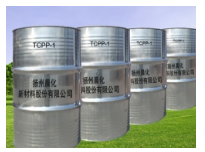Generally speaking, organic flame retardants have good affinity. In plastics, brominated flame retardants occupy an advantage in organic flame retardant systems. Although there are many criticisms on environmental protection, it is difficult to be replaced by other flame retardant systems.

Among the non halogen flame retardants, red phosphorus is a better flame retardant, which has the advantages of less addition, high flame retardant efficiency, low smoke, low toxicity and wide application. The compound use of red phosphorus and inorganic flame retardants such as aluminum hydroxide and expandable graphite can produce composite non halogen flame retardants such as phosphorus / magnesium, phosphorus / aluminum, phosphorus / graphite, etc. the flame retardant dosage can be greatly reduced, so as to improve the processing of plastic products Performance and physical and mechanical properties. However, ordinary red phosphorus is easy to oxidize and absorb moisture in the air, easy to cause dust explosion, difficult transportation and poor solubility with polymer materials, so its application scope is limited. In order to make up for this deficiency, microcapsule coating process can be used to make it into microencapsulated red phosphorus. In addition to overcoming the inherent disadvantages of red phosphorus, microencapsulated red phosphorus has low smoke and does not produce toxic gas in processing. Its dispersibility, physical, mechanical properties, thermal stability and flame retardancy are improved and improved.
Flame retardant science and technology is a science developed to meet the needs of social safety production and life, prevent fire and protect people's life and property. Flame retardant is the application of flame retardant technology in real life. It is a special chemical additive used to improve the combustion performance of combustible and flammable materials. It is widely used in the flame retardant processing of various decoration materials. The flame retardant processed materials can effectively prevent, delay or stop the spread of flame when attacked by external fire source, so as to achieve the flame retardant effect.
Flame retardant is a functional assistant that gives flammability to flammable polymers. It is mainly designed for the flame retardancy of polymer materials. There are many types of flame retardants, which can be divided into additive flame retardant and reactive flame retardant according to the use method.
Additive flame retardants are added to the polymer by mechanical mixing method to make the polymer have flame retardancy. At present, the additive flame retardants mainly include organic flame retardant and inorganic flame retardant, halogenated flame retardant (organic chloride and organic bromide) and non halogen. Organic flame retardants are represented by bromine series, phosphorus nitrogen series, nitrogen series, red phosphorus and compounds, while inorganic ones are mainly antimony trioxide, magnesium hydroxide, aluminum hydroxide, silicon series and other flame retardant systems.
Reactive flame retardant takes part in the polymerization reaction as a monomer, so the polymer itself contains flame retardant components. Its advantage is that it has little impact on the performance of polymer materials, and the flame retardant is durable.
In order to increase the flame resistance of polymer materials, it is mainly used in polymer materials such as plastics, rubber, fiber, etc., and most of these materials can be burned. In particular, if plastics are to be used in transportation, construction, electrical equipment, aviation, space flight and other aspects, it is urgent to solve the problem of flame resistance. The use of flame retardant should have the following conditions: do not reduce the physical properties of polymer materials, such as heat resistance, mechanical strength, electrical properties; decomposition temperature should not be too high, but can not be decomposed at processing temperature; good durability; good weather resistance; low price.